|
Three
Register, Manual Wind Monacos --
Reference
73633B
There
has been considerable discussion and
debate regarding the authenticity of
certain manual-wind Monacos, reference
73633B. These Monacos have blue dials,
three white registers, and are powered
by the Valjoux 7736 movement. Most
collectors agree that there are many
examples that use dials, hands and
perhaps cases that are not
authentic. Key
differences between the genuine and
questionable samples of these Monacos
include the following:
|
Hands
|
Hands
on all these Monacos are
brushed steel, with luminous
inserts, and the hands should
be long enough to reach the
circular track. Hands on some
questionable samples are
shorter, made of polished
steel, and may not have
luminous
inserts.
|
|
Script
|
Script has considerable
detail in certain letters (for example, the "A" in the word Monaco and the "R" in the word
Heuer should have small serifs / tails). Refinished / fake dials often lack this fine
detail.
|
|
Numerals
|
Style
of numerals seems to vary
between the genuine dials and
some of the questionable ones.
Notice different styles of the
"4"s (open or closed), and some variations in
other numbers.
|
|
Markers
|
Genuine dials usually have luminous dots at the 5-10-15-20-etc., although some genuine dials do not have these dots; applied markers at 2-4--8-10 should be rectangular, with polished tops and one beveled edge (toward outside); "waffle" tops on square markers indicate a refinished / fake dial; poor alignment of markers also indicates a refinished / fake dial
|
|
Case-Back
|
The
case-backs of all genuine
Monacos are marked "Tool 033",
referring to the plastic tool
used to open the
case.
|
The
following photographs illustrate
certain variations between these
Monacos, so that collectors can
distinguish models known to be genuine
and those about which there may be some
doubt.
|
|
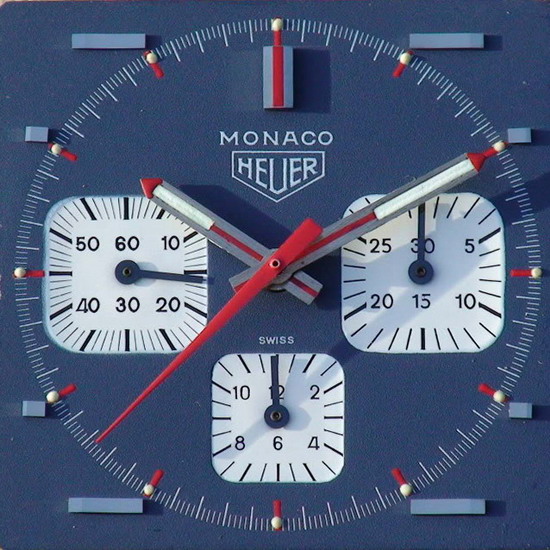 A genuine Monaco -- proper detail in the script ("Heuer" and "Monaco"); brushed steel hands (long and wide, with luminous inserts); correct numerals in the registers (closed "4"s); correct markers, properly placed. A genuine Monaco -- proper detail in the script ("Heuer" and "Monaco"); brushed steel hands (long and wide, with luminous inserts); correct numerals in the registers (closed "4"s); correct markers, properly placed.
|
|
 A genuine Monaco -- proper detail in
the script ("Heuer" and "Monaco");
brushed steel hands (long and wide,
with luminous inserts); correct
numerals in the registers (closed "4"s); correct
markers, properly placed.
A genuine Monaco -- proper detail in
the script ("Heuer" and "Monaco");
brushed steel hands (long and wide,
with luminous inserts); correct
numerals in the registers (closed "4"s); correct
markers, properly placed.
|
|

A genuine Monaco dial; note that there are no luminous dots on the dial; in many instances, luminous dots may fall off when the case is opened for servicing; here, all the dots have been removed.
|
|
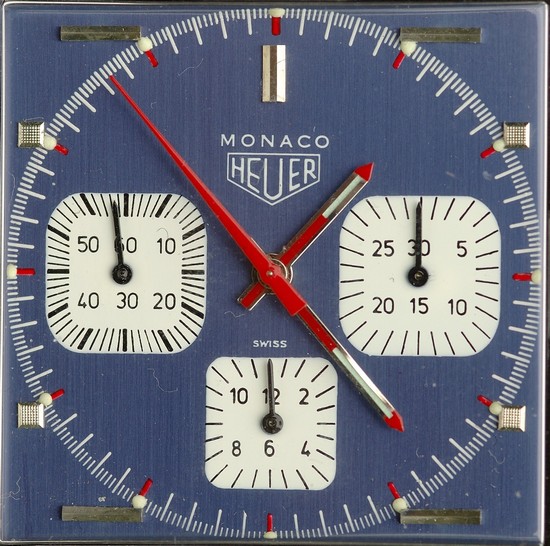
Questionable sample -- missing detail in the "Heuer" and "Monaco" script; short hands; waffle markers; hash marks on registers; and open "4"s suggest that this dial is not genuine
|
|

Questionable
sample -- missing detail in the script
("Heuer" and "Monaco"); short, thin
hands, perhaps from an Autavia GMT;
different style numerals in the
registers; applied markers not properly
aligned; no luminous dots on the
dial.
|
|

Questionable
sample -- missing detail in the script
("Heuer" and "Monaco"); short, thin
hands with minimal inserts; different
style numerals in the registers;
applied markers not properly
aligned.
|
|
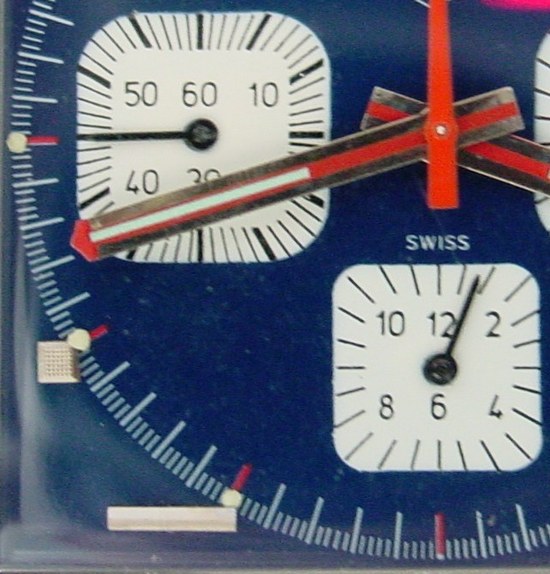
[text to be added]
|
|

There is considerable controversy as to whether Heuer ever made three register Monacos with blue registers. There may be a limited number that were made by Heuer (though this is controversial); there are certainly many fakes with the blue registers. On this watch, indicators of refinished dial / put together watch include the following:
- lines in registers very sloppy (especially continuous seconds register, at nine o'clock)
- applied "waffle" markers
- markers not well aligned
- hands are questionable
|
|

Similar to the blue dial / blue register one shown immediately above. Note the following:
- applied "waffle" markers
- markers not well aligned; scattered all over the dial
- hands are questionable
|
|
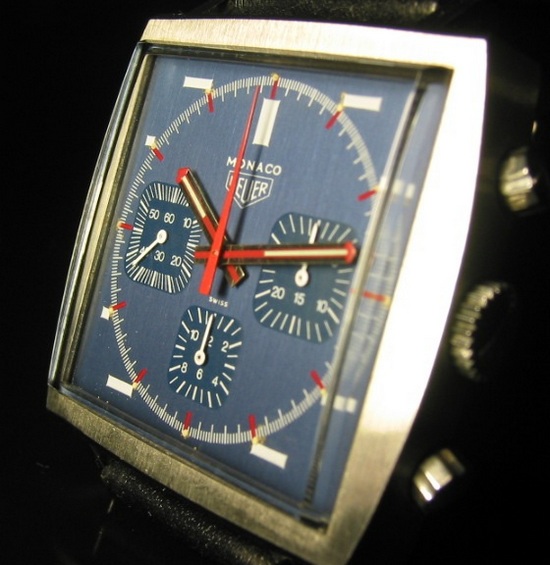
According to one of our readers, this blue dial / blue register Monaco has been authenticated by representatives of TAG-Heuer. It has painted markers, rather than applied markers. Compared with the blue / blue Monaco shown in the previous photograph, we see the following:
- lines in registers are properly spaced and aligned
- markers are properly aligned
- numerals in the registers are correct script (notice the numeral "4")
- luminous dots on the dial show some aging
|
|
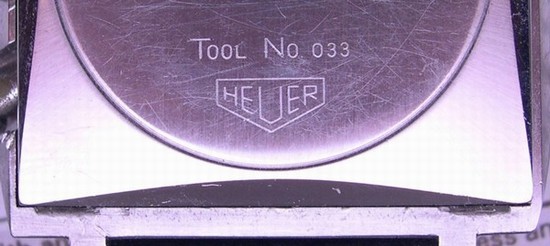
Proper
marking on the case-back -- Tool 033, a
reference to the tool that is used to
open the case.
|
|
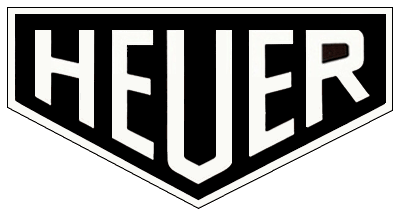
|
